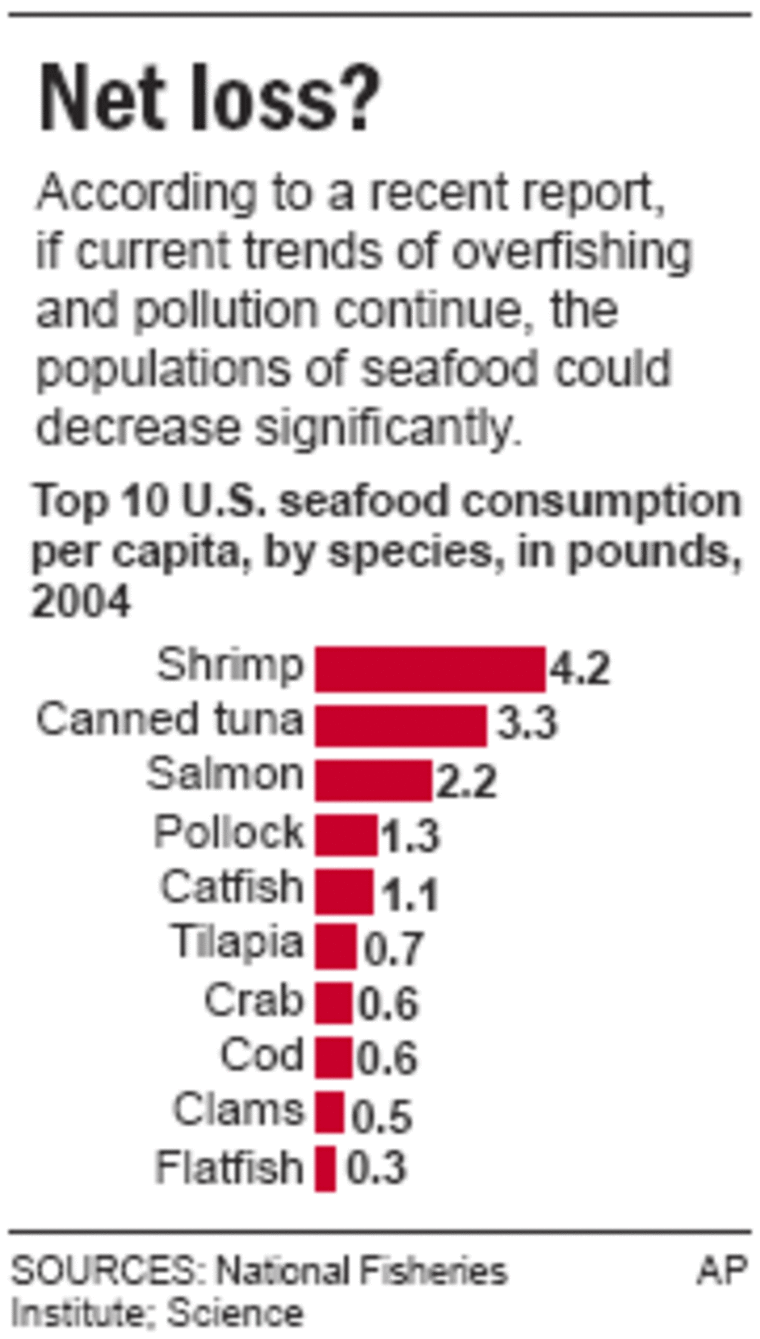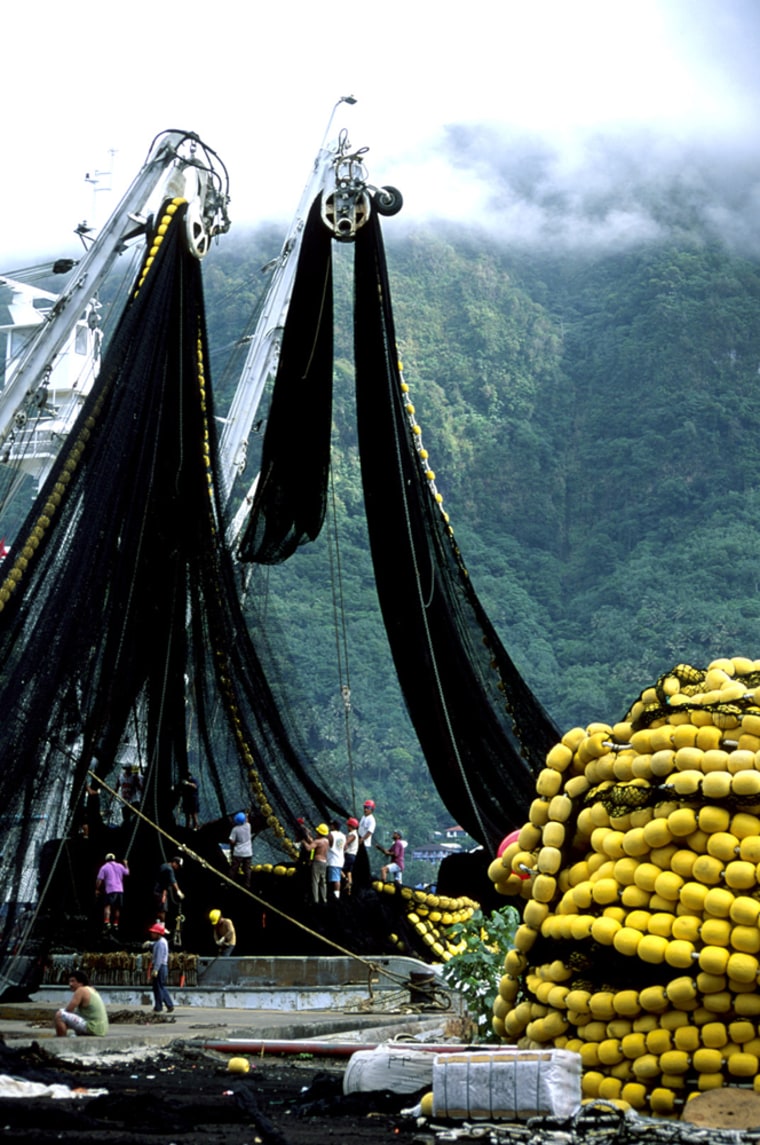Clambakes, crabcakes, swordfish steaks and even humble fish sticks could be little more than a fond memory in a few decades.
If current trends of overfishing and pollution continue, by 2050 the populations of just about all seafood face collapse, defined as 90 percent depletion, a team of ecologists and economists warns in a study published in Friday’s issue of the journal Science.
“Whether we looked at tide pools or studies over the entire world’s ocean, we saw the same picture emerging. In losing species we lose the productivity and stability of entire ecosystems,” said lead author Boris Worm of Dalhousie University in Halifax, Canada.
“I was shocked and disturbed by how consistent these trends are — beyond anything we suspected,” Worm said.
When ocean species collapse, it makes the ocean itself weaker and less able to recover from shocks like global climate change, Worm said.
“This research shows we’ll have few viable fisheries by 2050,” Andrew Sugden, international managing editor of Science, told reporters at a telephone news briefing. “This work also shows that it’s not too late to act.”
Added co-author Steve Palumbi of Stanford University: “Unless we fundamentally change the way we manage all the oceans species together, as working ecosystems, then this century is the last century of wild seafood.”
What was studied
The international team spent four years analyzing 32 controlled experiments, other studies from 48 marine protected areas and global catch data from the U.N. Food and Agriculture Organization’s database of all fish and invertebrates worldwide from 1950 to 2003.
The scientists also looked at a 1,000-year time series for 12 coastal regions, drawing on data from archives, fishery records, sediment cores and archaeological data.
“At this point 29 percent of fish and seafood species have collapsed — that is, their catch has declined by 90 percent. It is a very clear trend, and it is accelerating,” Worm said. “If the long-term trend continues, all fish and seafood species are projected to collapse within my lifetime — by 2048.”
He likened a diverse ocean environment to a diversified investment portfolio.
With lots of different species in the oceans, just as with lots of different kinds of investments, “You spread the risk around,” Worm said. “In the ocean ecosystem, we’re losing a lot of the species in our stock portfolio, and by that we’re losing productivity and stability. By losing stability, we’re losing the ability of the system to self-repair.”
“It looks grim and the projection of the trend into the future looks even grimmer,” he added. “But it’s not too late to turn this around. It can be done, but it must be done soon. We need a shift from single species management to ecosystem management. It just requires a big chunk of political will to do it.”
The researchers called for new marine reserves, better management to prevent overfishing by large trawling fleets and tighter controls on pollution.
In the 48 areas worldwide that have been protected to improve marine biodiversity, they found, “diversity of species recovered dramatically, and with it the ecosystem’s productivity and stability.”
While seafood forms a crucial concern in their study, the researchers were analyzing overall biodiversity of the oceans. The more species in the oceans, the better each can handle exploitation.
“Even bugs and weeds make clear, measurable contributions to ecosystems,” said co-author J. Emmett Duffy of the Virginia Institute of Marine Sciences.
Industry doesn't see a problem
The National Fisheries Institute, a trade association for the seafood industry, does not share the researchers alarm.

“Fish stocks naturally fluctuate in population,” the institute said in a statement. “By developing new technologies that capture target species more efficiently and result in less impact on other species or the environment, we are helping to ensure our industry does not adversely affect surrounding ecosystems or damage native species.
Seafood has become a growing part of Americans’ diet in recent years. Consumption totaled 16.6 pounds per person in 2004, the most recent data available, according to the National Oceanic and Atmospheric Administration. That compares with 15.2 pounds in 2000.
Joshua Reichert, head of the private Pew Charitable Trusts’ environment program, pointed out that worldwide fishing provides $80 billion in revenue and 200 million people depend on it for their livelihoods. For more than 1 billion people, many of whom are poor, fish is their main source of protein, he said.
The research was funded by the National Science Foundation’s National Center for Ecological Synthesis and Analysis.
